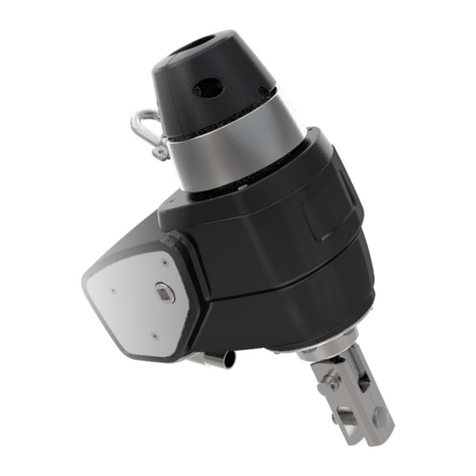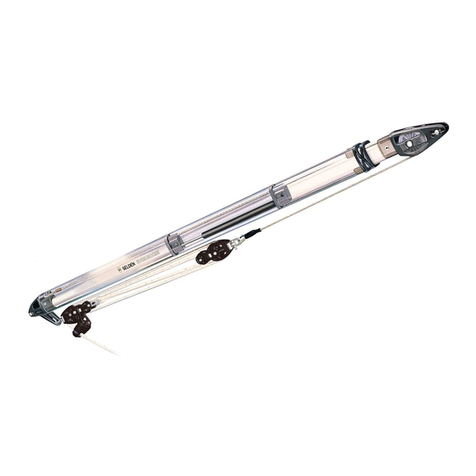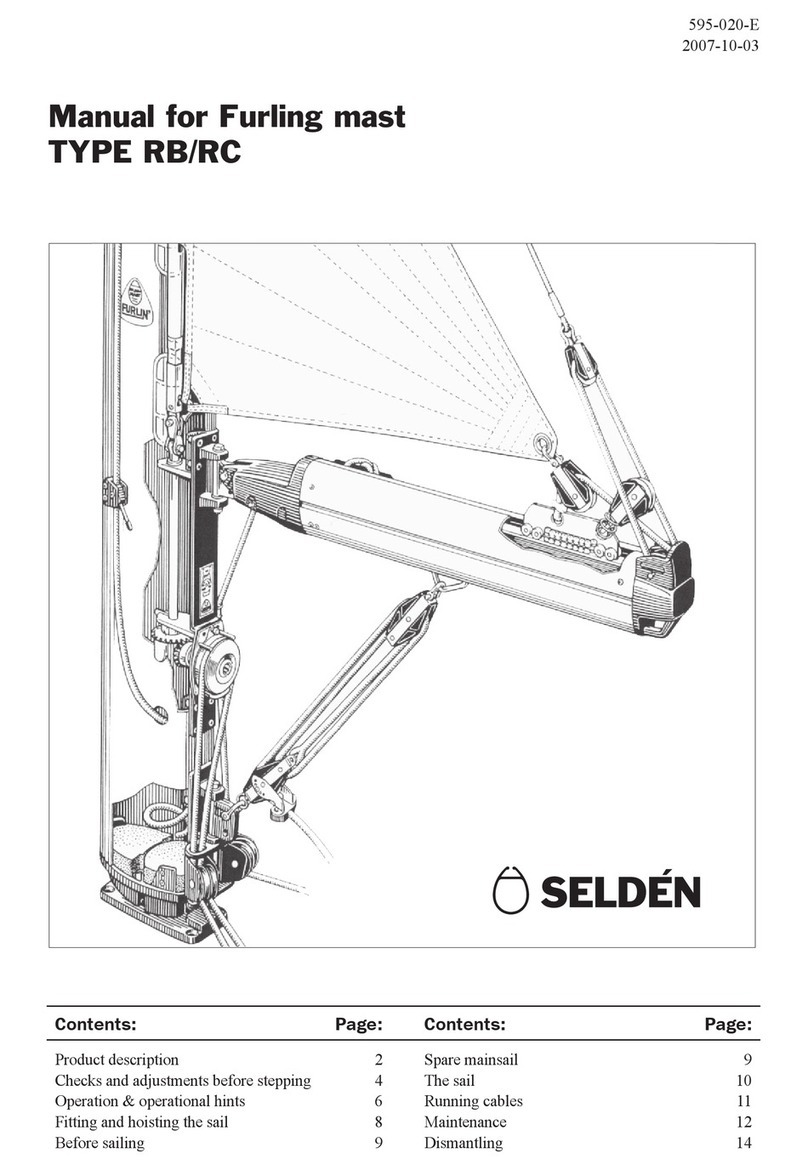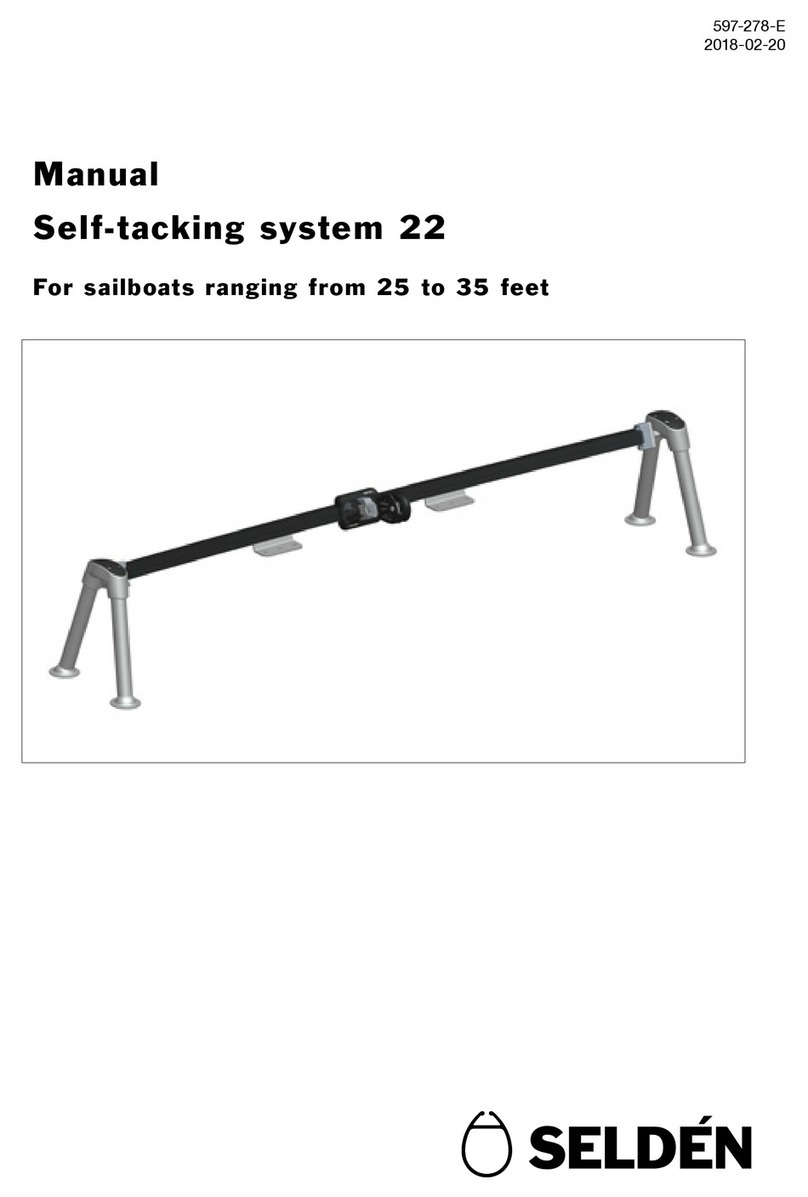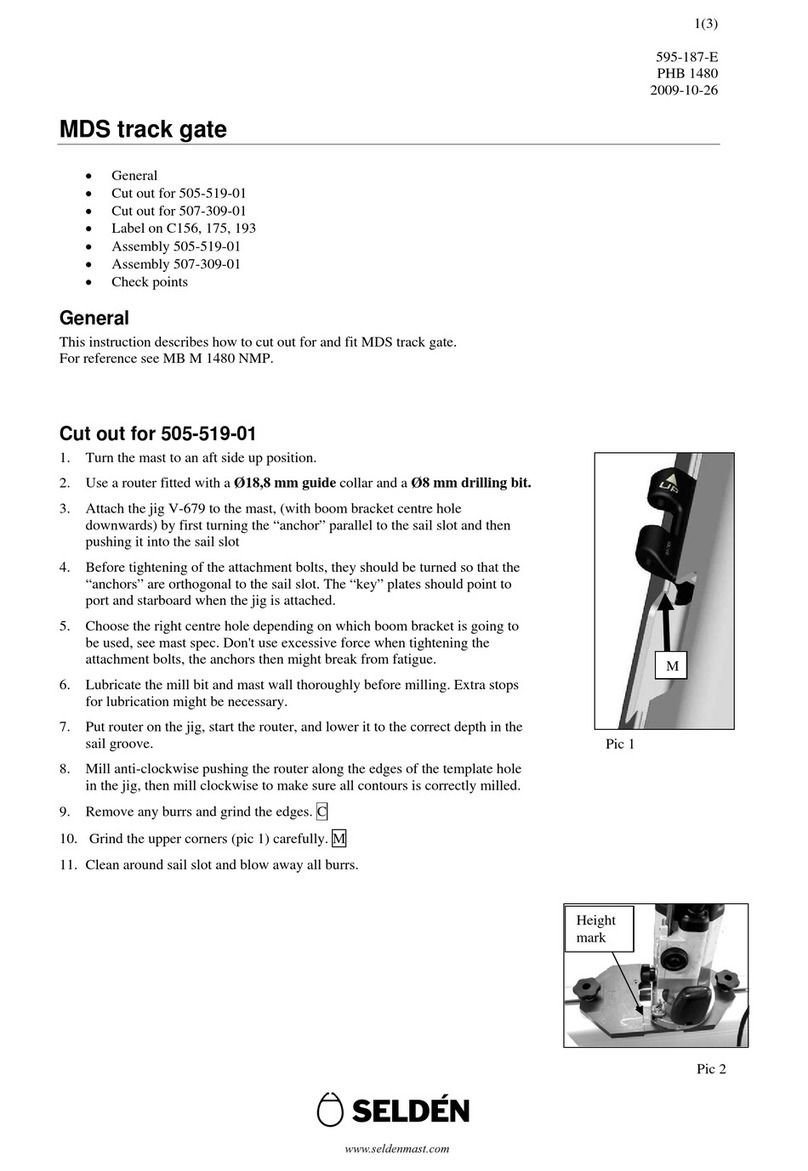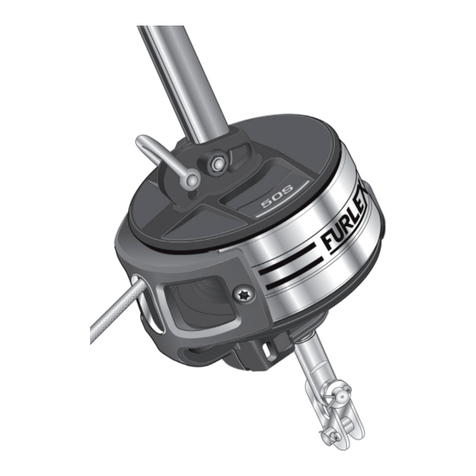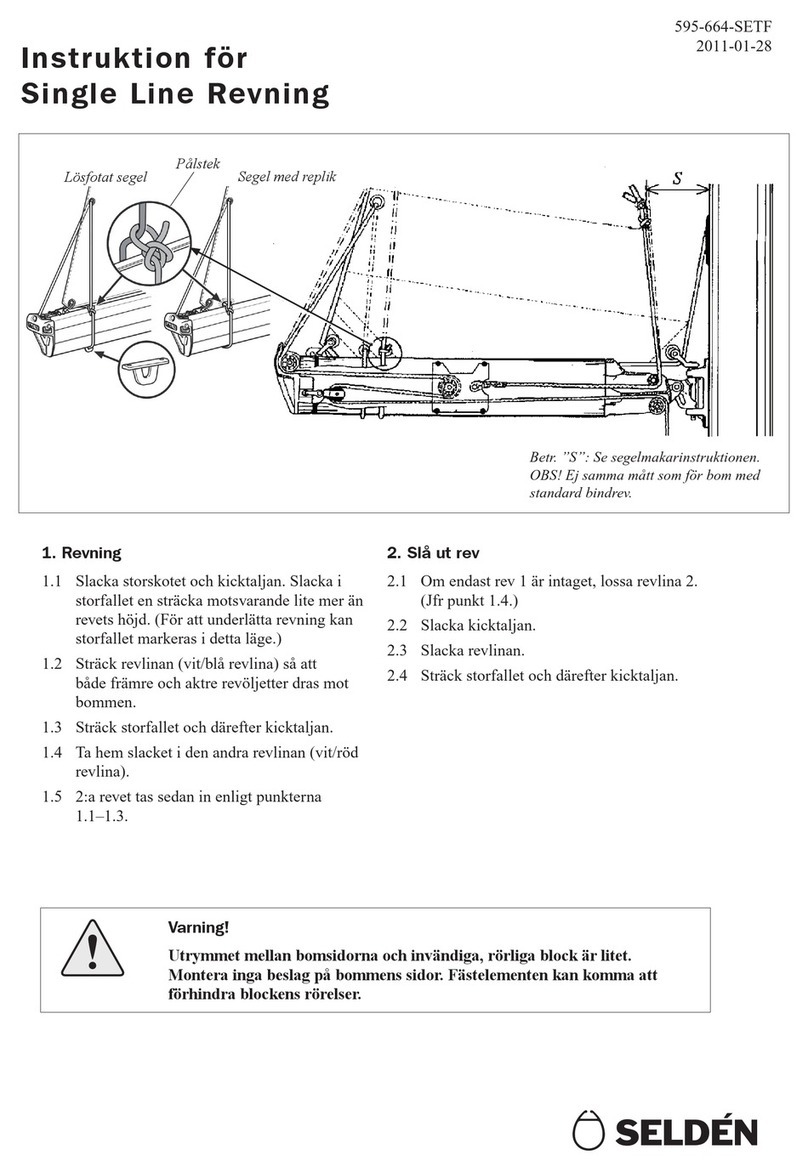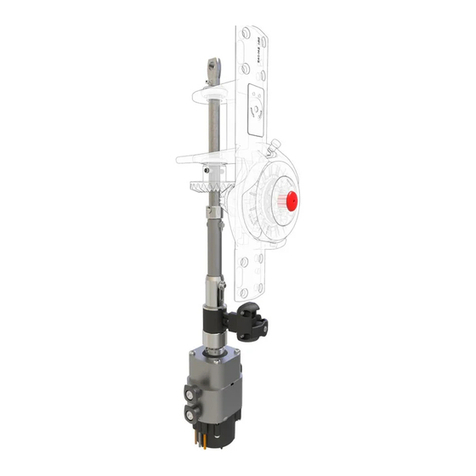7
Cut the new forestay wire at this length (WL, fig. 8:2)
F
G
T
Forestay wire length (see fig. 8.1)
FL
–
–
(6 profiles)
–
16.735
370
16.365
16.365
1.290
15.075
14 .400
675
400
275
Your stay
Example
ø10
300 H
Example
ø10
300 H
Your profile
Luff extrusion length (see fig. 8.2)
Shorten the distance tube for the top extrusion: (fixed measurement)
Distance tube length. G =
Calculations
1. Determine mast rake with fore and backstays tensioned.
2. Slacken off the backstay as much as possible. Use the genoa halyard to pull the masthead forward.
Tie the halyard to the boat, do not use the snap-shackle. Remove the forestay without altering the
setting of the rigging screw if fitted. Place the forestay on a smooth surface and measure its length
(FL) with the steel measuring tape.
3. Note the forestay length (FL) in the following table. The correct wire length (WL) can then be cal-
culated.
4. Measure the new wire from the centre of the hole in its end fitting. Mark off the length WL on the
wire in such a way that it cannot be eradicated. Do NOT cut the wire yet.
–
=
=
Standard deduction (A + B):
WL
A + B
New forestay wire length as per table above
–
=
–
=
=
Deduction for lower wire terminal (rigging screw 50% extended)::
Old forestay length (FL) without tension, but including rigging screw (if any). (See fig. 8.1)
WL
300 H
Ø 8 mm wire: – 360 mm
Ø 10 mm wire: – 370 mm
400 H
Ø 12 mm wire: – 490 mm
Ø 14 mm wire: – 490 mm
300 H
Ø 8 mm wire: – 1300 mm
Ø 10 mm wire: – 1290 mm
400 H
Ø 12 mm wire: – 1350 mm
Ø 14 mm wire: – 1350 mm
–
–
=
–
=
If a link or an extra toggle will be fitted then deduct its length from FL.
Note: Any additional link or toggle must have a torsional strength (torque capacity)
not less than the stem-head fitting requirement stated on page 9, second item.
E + F
E
E + F =
Max. number of 2400 mm extrusions which together are shorter than
E + F: .................off x 2400 mm = E E =
Cut the top extrusion. Chamfer the cut end with a file.
Top extrusion length F =
If F is longer than 2000 mm; Cut the top section from a 2400 mm extrusion.
If F is between 400 and 2000 mm; Cut the top section from a 2000 mm extrusion.
If F is shorter than 400 mm; Replace the topmost 2400 mm extrusion with a
2000 mm extrusion. (See E). The join will then be moved
down 400 mm. Also adjust E and F as follows: Reduce
measurement E by 400 mm. Increase the F measurement
by 400 mm. Cut the top section from a 2400 mm extrusion.
The top extrusion in normally cut from the 1700 mm (67”). If the top extrusion is shorter than 700 mm
(27 9/16”) the joint will be too near the top. In this case replace the uppermost full-length 2400 mm
extrusion with the 1700 mm extrusion. In this way the joint is moved 700 mm down the stay.
Adjust the E and F measurements as follows:
Reduce the E measurement by 700 mm.
Increase the F measurement by 700 mm.
300 H
Ø 8 mm wire: – 380 mm
Ø 10 mm wire: – 400 mm
400 H
Ø 12 mm wire: – 490 mm
Ø 14 mm wire: – 490 mm –
=
Note! Use caution when opening the roll of wire.
300 H
Ø 8 mm wire/ Ø 10 mm ø wire
400 H
Ø 12 mm wire/ Ø 14 mm ø wire





















